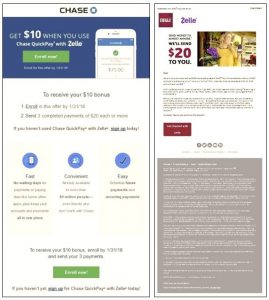When the pandemic struck, many email marketers found themselves with challenges, for obvious reasons. With so many people ditching all shopping for bare necessities, numerous brands found it difficult to market their non-essential products.
Various surveys show that many email marketers have been sending fewer emails than they used to, and that their open rates either decreased or stagnated.
Brands operating locally have found a roundabout solution: they promptly started offering home deliveries. This strategy, sadly, doesn’t work for everyone, as it is largely reliant on the actual type of products a brand sells.
However, there are a number of ways to boost your email marketing campaigns and get your business back on track. Let’s consider some of the main reasons why your email marketing campaigns aren’t as efficient as they could be.
1. You Aren’t Establishing Goals for Your Campaign
This is a common mistake among many email marketers, even during regular times. The fact that the success of any brand relies heavily on its ability to set its goals and align and execute the priorities seems to have been lost in translation.
Employees remain the crucial part of this complex process, as their engagement should be aligned with the objectives.
Now, there are numerous strategies that can help you set company goals, and one of the most successful ones is the Objectives and Key Results (OKR) methodology.
Based on this methodology, objectives are what you want your company to accomplish. They should be aligned across the board, with all departments working in unison.
Key results are the results that explain, in detail, how the company should achieve the goals. In order for them to be valid, key results need to be measurable, moderate in number and have their proper set deadlines.
That’s all nice and all, but you might be wondering how to set OKRs. Well, for starters, OKRs should be a result of strategic decision-making and be supported by palpable initiatives that can make a difference fast. It goes without saying that they should be prioritized, with the crucial ones being implemented first.
In plain English, you should start with setting realistic priority objectives first, and follow up with smaller ones. Company efforts should be focused on the priorities and, once again, aligned. OKRs must be supported across the board, with every team defining their priorities and setting a progress tracking system.
As already mentioned, OKRs must be measurable. In most cases, communication is the best approach, as goal alignment is a complex process. Managers should talk with team members and provide coaching, as necessary.
2. You Aren’t Developing Targeted Content
Next up, don’t forget targeting. Non-targeted email campaigns don’t render desired results even at the best of times, let alone during times of crisis.
You should make a habit of using insights to perfect your campaigns. Getting to know your target group is the first logical step that, contrary to popular belief, goes beyond demographics, location and gender. You should also rely on insights on visitors’ browsing and purchase history — and their feedback.
Keep in mind that asking customers for direct feedback is not, in most cases, considered either too forward or too aggressive. Many people actually want their opinion to be heard. Simply put, why would they go elsewhere to buy certain products if they can finish all their purchases in one place?
In that context, targeting should encompass a number of factors, including but not limited to knowing your target audience, their shopping interests, their favorite products, their purchasing power, their demographics, and any technical issues they may be facing (these can be addressed on the spot, preventing future losses). Segment your campaigns to offer only relevant products and make sure to follow up.
Finally, your emails should be skillfully written, but the same strategy should be applied to the website content. Even the finest of emails will fall short of expectations if the link they advertise is showcasing poorly written content.
As to how to write great articles, there are a couple of tips. First of all, use a spell checker. It may sound elementary, but many people actually overlook it. Secondly, be concise and topical. Sadly, no one reads anything anymore; people mostly scan through the text looking for specific information. Lastly, insert an image or two to break the text, but keep in mind that mobile users on limited bandwidth won’t appreciate it if you use large images.
3. You Aren’t Creating the Right Email Subject Lines
Subject lines decide the fate of your email — as simple as that. The best email subject lines are clear, catchy and no longer than 41 characters. It is important that the subject line is not cut, so keep the word count in mind.
Some efficient subject lines feature keywords, but this is not the crucial step. Creativity is… with a zest of research. Namely, some words are more likely to attract recipients’ attention than others. According to Alchemy Worx, the five most efficient keywords are “go,” “just,” “upgrade,” “content” and “wonderful,” followed by “congratulations,” “promotional,” “snapshot,” “deduction” and “voluntary.”
Some other high-performing subject line keywords include: “introducing,” “back in stock,” “breaking,” “off selected,” “brand new,” “bulletin,” “iPhone,” “available,” “sale starts,” “great deals,” “latest,” “golden,” “thanks,” “thank you,” “order today,” “orders over” and “special.”
As you can see, the list is long, but rather than using too many of these words, choose a relevant one and make sure it fits into the rest.
Remember that the finest of subject lines address urgent issues and offer solutions to imminent problems. If you’re using insights to their full potential, you should be able to determine what exactly the recipient is looking for in each individual case.
Conclusion
Email marketing is tremendously popular (and cheap) — not even the pandemic can change that fact. The messages you send should serve as a means of communication with your audience, rather than to be aggressive advertisements.
Mind the frequency and timing of your emails, especially if your brand is operating internationally. Keep in mind that people get loads of unwanted emails and that if your subject line doesn’t stand out, your email will be deleted or flagged as spam without even being considered.
Stick to your OKRs and keep aligning your business efforts. In the long run, this is the only way to remain successful.
Digital & Social Articles on Business 2 Community
(79)






